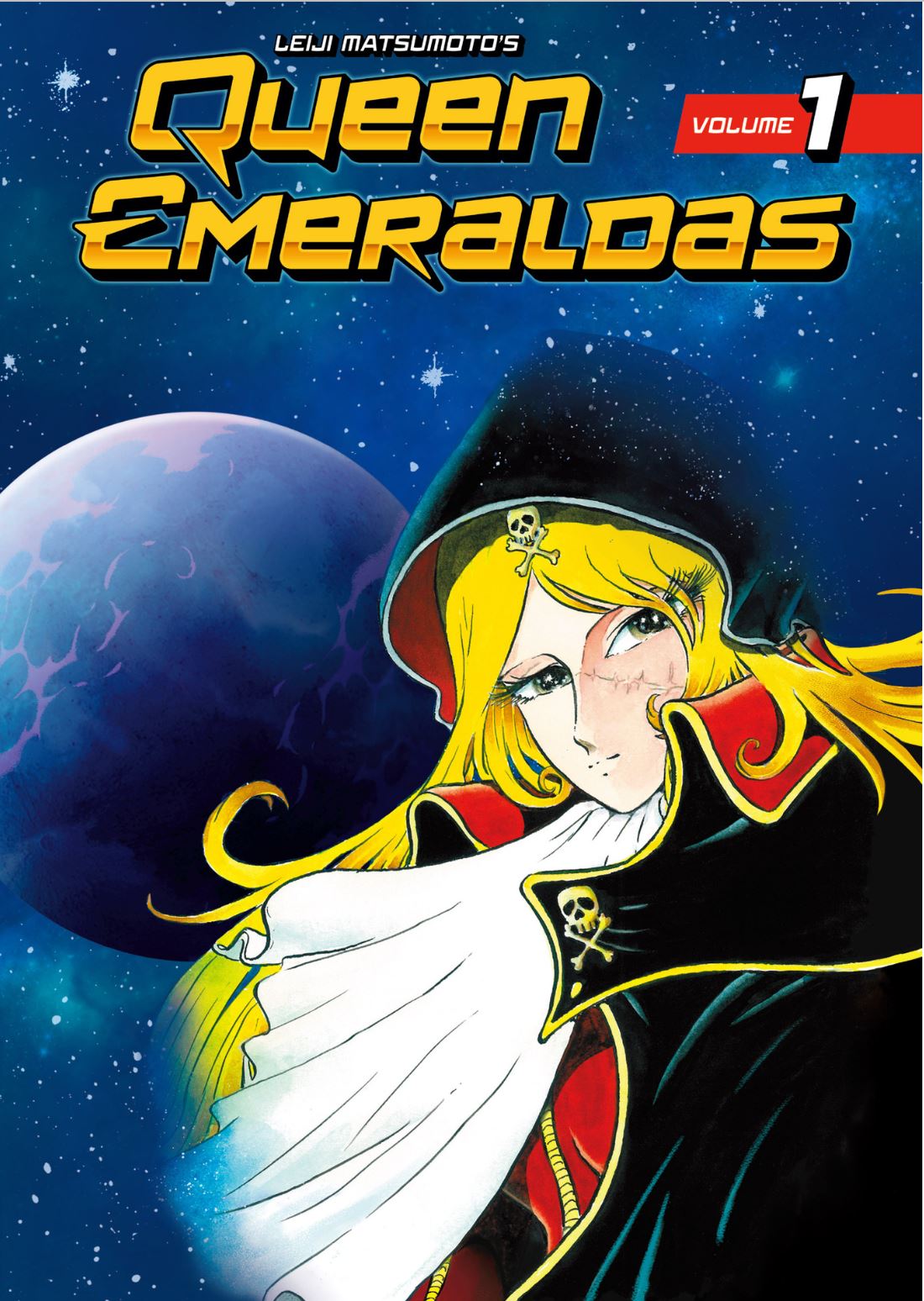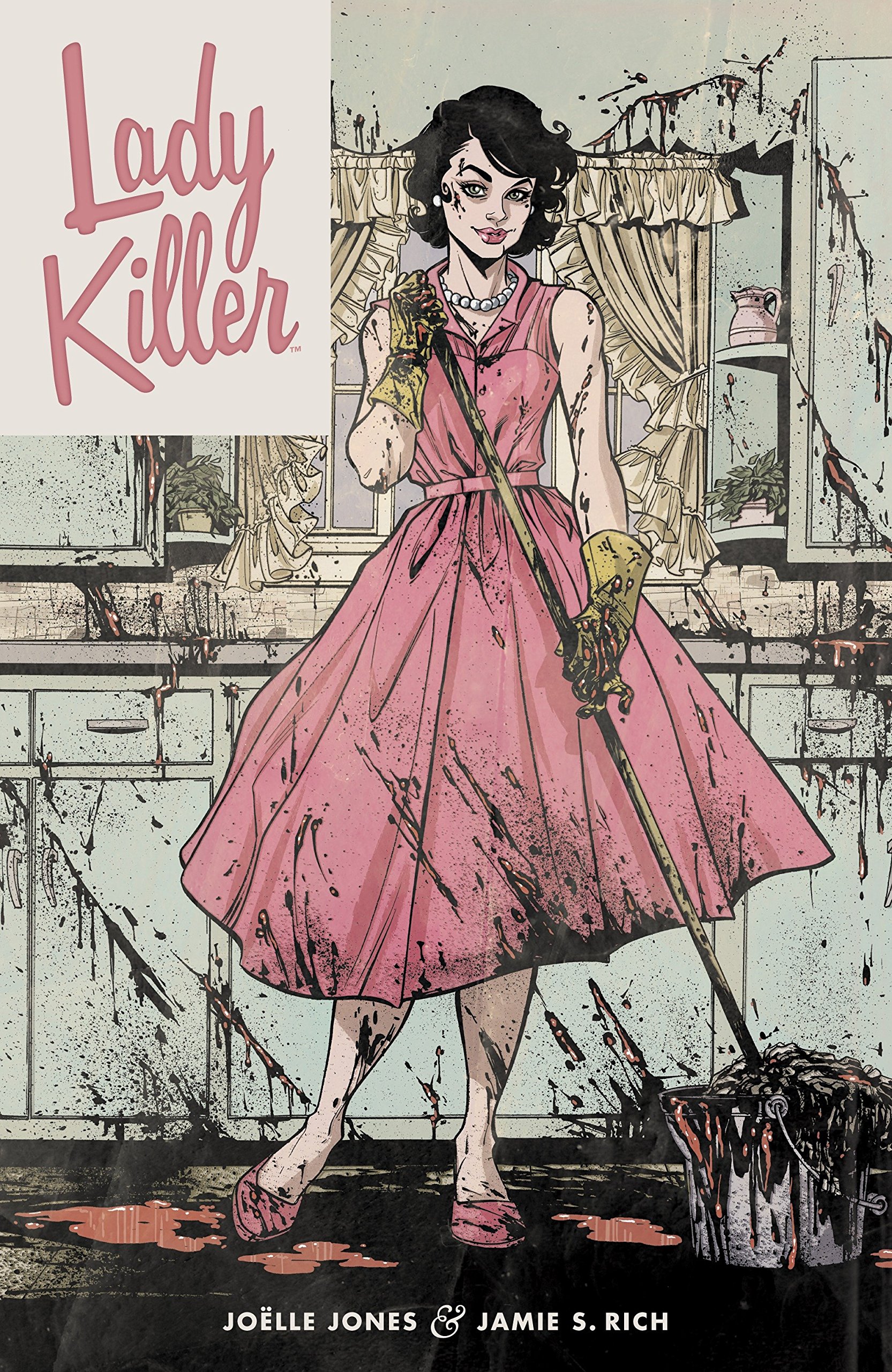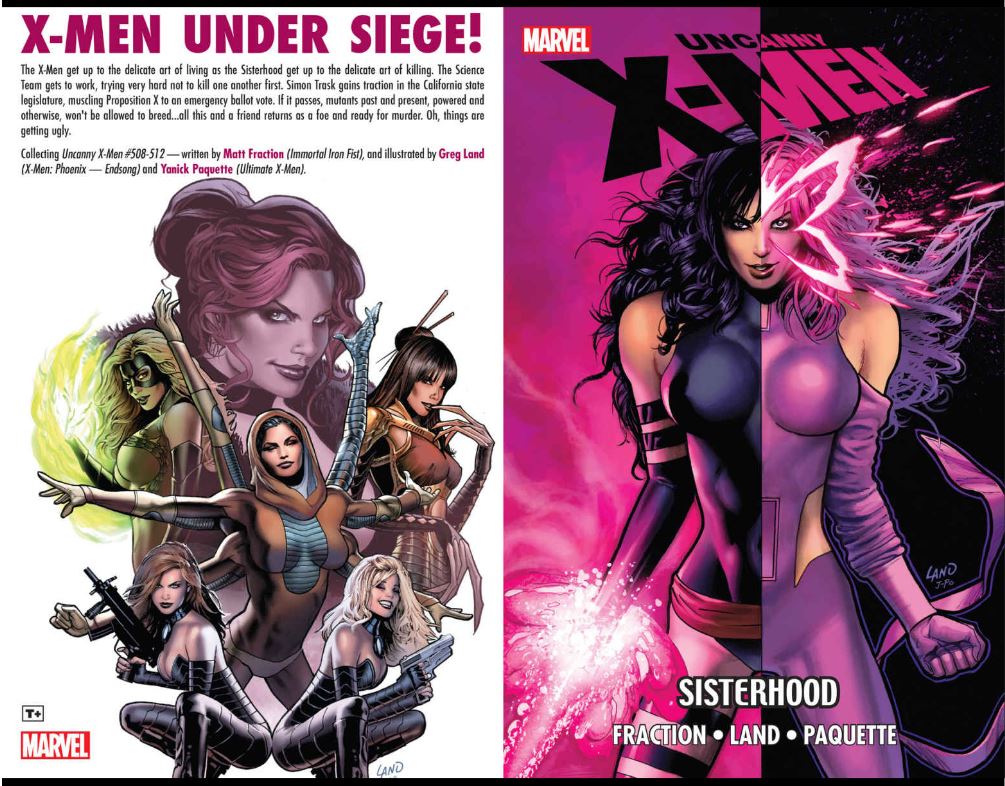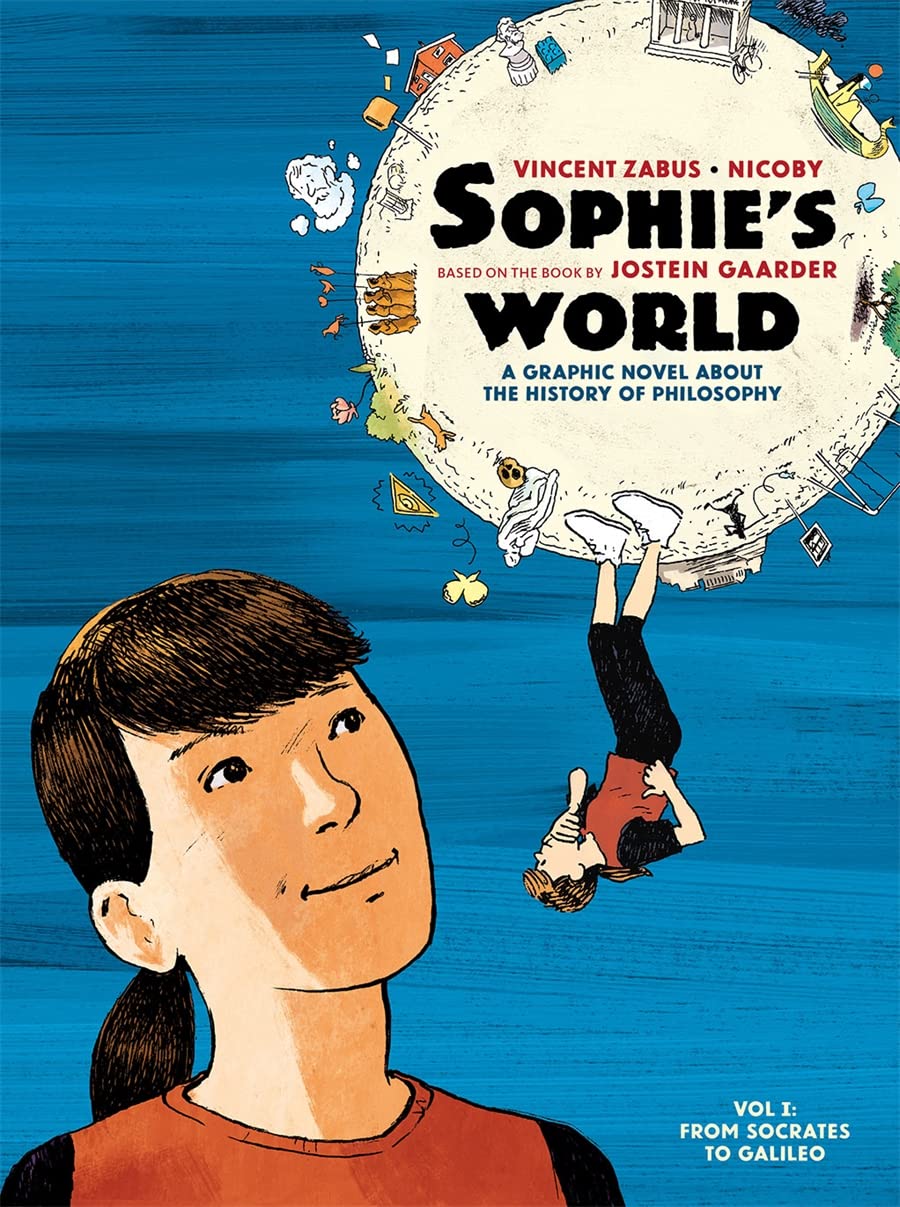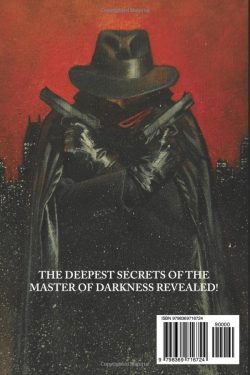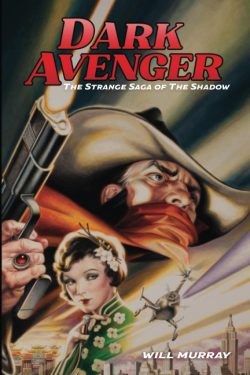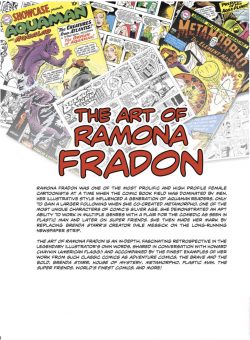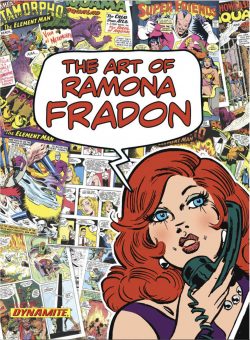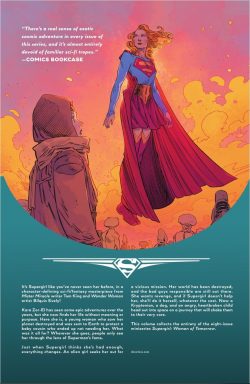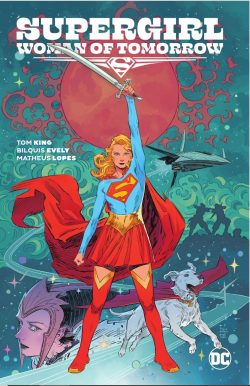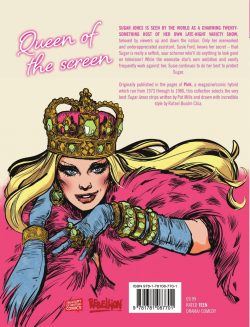
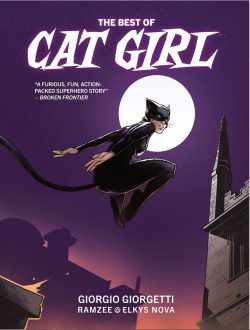
By Giorgio Giorgetti, Ramzee, Elkys Nova, anonymous & various (Rebellion Studios)
ISBN: 978-1-78618-585-3 (TPB/Digital edition)
Here’s another superb lost treasure of British comics finally getting some of the attention its always deserved. Of course, that statement only applies if you are male and old. Just like every place on Earth that puttered along obliviously until a white guy stuck a flag in it, I’d imagine the girls who bought Sally back then had no problem appreciating the thrilling travails of young Cathy Carter who donned a literal catsuit to prowl our nation’s smoky rooftops in search of villainy to crush and people to help.
In terms of variety, emotional quality and respect for the readership’s intelligence, experience and development, British girls’ periodicals were always far more in tune with the target audience, and I wish now that I’d been more open-minded and paid more attention back then…
It’s certainly an attitude modern editors have embraced. Since 2016, Rebellion Studios has been commemorating the best of a very large bunch in assorted curated reprint archives – and even some new material – as part of its Best of… and Treasury of British Comics strands, as well as ongoing Judge Dredd/2000 AD publications.
Sally was a colourful, adventure-themed Girls weekly from London-based IPC (formerly Fleetway): running 94 anthological issues from June 14th 1969, before merging with juvenile juggernaut Tammy in 1971. The Sally brand of strange tales survived until 1976 through Christmas Annuals (6 of them). The title relied heavily on mystery and action strips such as Schoolgirl Princess, Justine, the Winged Messenger of Justice, Maisie’s Magic Eye and today’s star turn, The Cat Girl…
Another unmissable gem from days gone by, and re-presenting serialised thrills spanning June 1969 to mid-1970, this collection features yet another kitty-clad costumed crusader to augment Billy the Cat and Katie (The Beano), The Cat (June), The Cat (Bunty), Peter the Cat (Score & Roar), The Leopard from Lime Street (Buster) and others. Of course, this lass is exceptionally well-produced and memorable…
Whereas the writer is sadly unknown to us, these detective delights were sublimely illustrated by Italian émigré/UK comics stalwart Giorgio Giorgetti (Rat-Trap, House of Dolmann, Mam’selle X, Jump, Jump, Julia, and many others). He was swift and prolific, tackling newspaper strips, book illustration and seen almost constantly in titles including Mirabelle, Girl’s Crystal, Tammy, Jinty, Sally, Katy, June and School Friend as well as for general interest comics like Shiver & Shake and Look and Learn. He died far too early, in 1982.
I mentioned that these recovered memories have inspired new stories, and this enticing, mostly monochrome tome opens with a modern, full-colour revival of the feline fury, courtesy of writer Ramzee (FAB, LDN), artist Elkys Nova (Roy of the Rovers), colourist Pippa Bowland & letterer Simon Bowland.
Taken from 2020’s Tammy & Jinty Special and set in the present, ‘Cat Girl Returns’ sees single parent police inspector Cathy Cooper trailing murderous kidnappers/diamond thieves, covertly assisted by her daughter Claire.
The precocious kid has found an old cat “onesie” in mum’s closet that comes with a mask and imparts actual feline superpowers upon her…
Karl Stock’s full and comprehensive illustrated fact-feature on ‘Giorgio Giorgetti – The Cat Girl Artist’ – also from the T & J Special – closes this collection as part of a bonus section of creator biographies, but between those poles lurk a quintet of quirky, “kitchen-sink” superhero sagas utterly unlike anything the Americans were attempting at the time…
Girls’ comics always had a history of addressing modern social ills and issues but this “Girls Juvenile Periodical” viewed events and characters through a lens of soap opera criminality and casual mysticism. It was also one of the best-drawn comics ever seen…
Heading back to a time before mobile phones and social media, a widower tries to combine solo parenting with keeping his business afloat. Mr. Carter is a private detective slowly going under because he’s obsessed with a mysterious gangland mastermind.
Typically – in a classic early example of what we now know as Mental and Emotional Loads for women – young Cathy pretty much runs the home and keeps him going, whilst fretting over ways to help him more. She gets her chance after cleaning the attic and stumbling over a strange garment sent from Africa by a grateful and satisfied client. It was hidden inside a puzzle box Dad couldn’t get open…
Helpless to resist its weird appeal, Cathy dons the gear and realises it’s instantly made her stronger, faster, more agile, supernaturally sensitive and alert. It’s even given her claws and the ability to communicate with cats – and when she does it, they listen…
Soon ‘The Cat Girl’ (14th June – 2nd August 1969) is secretly supervising Carter’s cases, watching his back and fighting crime to help get ahead of the mounting bills. The first exploit sees him crack a massive insurance scam engineered by the hidden mastermind, who then targets his true nemesis prior to a major raid on a stately home…
Cat Girl constantly outwits sinister foe ‘The Eagle’, who returns for more in a second adventure (running from 9th August – 13th September) that sees her put all the clues together to scupper a huge mail train robbery.
Sadly, in the process the scurvy schemer deduces her secret. Abducting the kid, Eagle tests her almost to destruction whilst seeking to steal her powers. He does succeed in mesmerising her into becoming a tool in his wicked arsenal, but is still outwitted at the end…
The Cooper’s third performance here spans 24th January and 21st March 1970. Their star had risen, and Dad’s far more prosperous and prestigious agency is engaged to locate stolen gems lost during a major robbery. Meanwhile, Cathy quietly toils to clear the name of a performer seemingly possessing all the skills of the svelte vigilante…
Acrobatic Betty Breton claims she has been framed for stealing her theatre show’s takings, but there’s a far more complicated game in play, one requiring Cathy going undercover as a ‘Theatre Cat’ When her super-suit is swiped, both Cooper cases converge and a grim grand scheme is exposed…
In the aftermath of public acclaim, ace criminologist Cooper and his kid are invited to South America by flashy, wealthy CEO Mr. Barton. He wants them to capture infamous bandit El Sorro, whose extortion racket is cutting into Monza Oil’s vast profits, but Cathy learns a slightly different story when lodging with the Carlos family and befriending their daughter Mario.
Running 28th March to 30th May, this exotic extravaganza sees our schoolgirl hero infiltrating the bandit gang as ‘El Catto’, only to inadvertently expose and compromise her dad’s investigations whilst rapidly rising in the rogues ranks.
Only after a succession of astounding feats and incredible ventures does the masked “boy” (because no girl could fight like El Catto does) bring down the gang, save Dad and earn the eternal gratitude of Monza Oil and the common folk…
One final foray comes in a self-contained extended tale from Sally Annual 1971 (released in Autumn 1970), with Cathy countermanding Dad’s wishes and joining a travelling carnival. Her stint as acrobatic aerialist ‘Circus Cat’ is to help trapeze artist Kay Katoni, who can’t keep narrowly escaping a series of bizarre and potentially fatal “accidents” forever. It doesn’t take long for the feline flyer to divine who’s got it in for Kay and why…
This engaging and tremendously compelling tome is another glorious celebration of a uniquely compelling phenomenon of British comics and one that has stood the test of time and still adhered to the prime directive of UK costumed champions: “all British superheroes must be weird and off-kilter”.
Don’t miss this chance to get in on something truly special and sublimely entertaining…
© 1969, 1970, 2020 & 2022 Rebellion Publishing IP Ltd. All Rights Reserved. The Cat Girl and all related characters, distinctive likenesses and relevant elements featured in this publication are trademarks of Rebellion Publishing IP Ltd.



